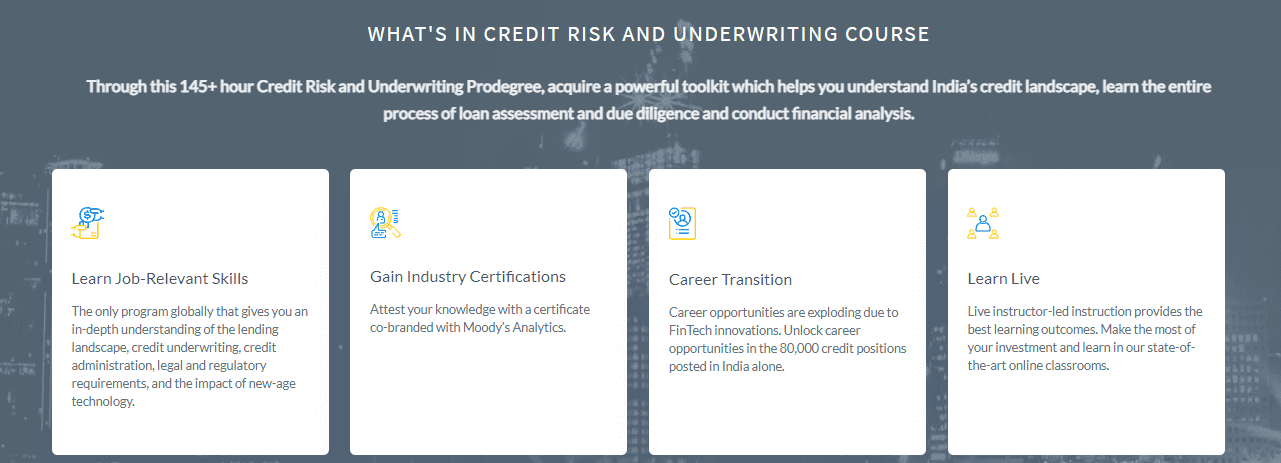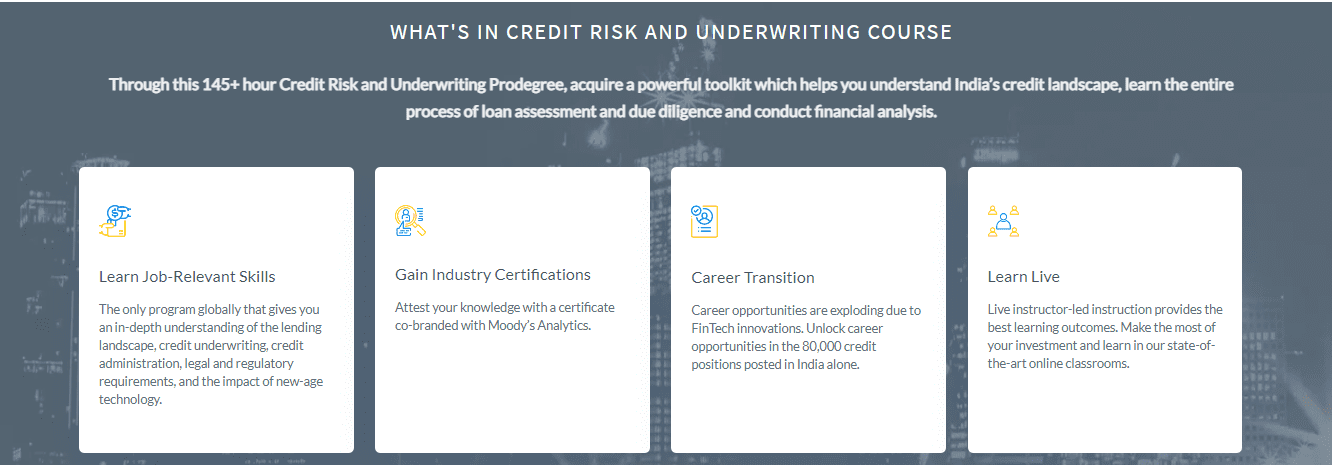The AI-based transformation is slowly taking over the major business sectors. For finance especially, it has proven to be an excellent support tool. From accounts to credit risk underwriting, the benefits of AI tools have been immensely profitable. The same goes for commercial loan lending and underwriting. As this is a highly data-driven process, AI tools can provide immense support in the process.
Credit risk analyst is a highly demanding career these days, and this could be a terrific option for students thinking about their careers. Many institutions provide compact credit risk underwriting courses. You can check out Imarticus Learnings’ credit risk analyst course to enhance your skills to the next level.
Here, we are going to explain what commercial loan underwriting is, how a knowledge-based approach or how AI tools can benefit the process, and some other things that should be kept in mind.
What is commercial loan underwriting?
From the start-up stage to asset acquisition to ongoing expenses, there are a lot of reasons a business needs loans for. A bank or financer usually wants to analyze the reasons for a business borrowing loans along with its financial condition. This process is called commercial loan underwriting.
This process examines whether a business would be able to pay back the borrowed amount along with the interests. Credit risk management courses basically teach you how to analyze the chances of a successful repayment or the failure of the same.
Benefits of a knowledge-based approach
As this is a completely data-driven process, AI tools can provide significant support which in turn results in better time management, swift decision making as well a lesser chance of human errors occurring. The major benefits of a knowledge-based approach to the whole loan underwriting process are as follows:
- It helps in merging traditional, social, and online data sources. Which results in a bigger amount of data flow that helps in swift decision making.
- Misperceptions can be corrected in due time with the help of AI-delivered information.
- The structured internal big data makes up only about 20% of the decision-making process. So by adding the rest of the unstructured data into the process, the decisions made are a lot more beneficial to both parties.
Key things to keep in mind
To make sure that this process works as efficiently as possible, there are a few key things that should be kept in mind. Such as:
- Customer experience should be the focus of the process. And it should be done by combining all aspects of the knowledge-based approach together.
- Some companies use cognitive stimulation, some use natural language processing while others use computer vision to help the process. The ideal structure would be to combine all these factors into building a giant machine that works smoothly and efficiently.
- The end result of the customer experience-oriented process is to provide the customers with their needs before they have a chance to ask.
Conclusion
AI has been causing a steady change in the last few years. And it is going to grow more and more in the coming years. This is the prime time to associate yourself with data-affiliated courses if you are thinking about good career prospects for your future. The question is where to enroll for good credit risk underwriting courses and credit risk management courses. Check out Imarticus Learnings’ credit risk analyst course to sharpen your skills to the max.





 What Else do I Get When I Take a CRU-PRO Degree?
What Else do I Get When I Take a CRU-PRO Degree?


 The course will help you leverage current data and maintain the scorecard model. Here are some ways in which you can improve the credit risk process.
The course will help you leverage current data and maintain the scorecard model. Here are some ways in which you can improve the credit risk process. Learn Credit Risk and Underwriting
Learn Credit Risk and Underwriting 
 Get an in-depth understanding of dynamic banking & non-banking financial corporations (NBFC) loan markets with the
Get an in-depth understanding of dynamic banking & non-banking financial corporations (NBFC) loan markets with the 
 Comfort with Financial/Statistical software: Credit analysis requires risk analysis using statistical software. Knowledge & comfort working on such platforms is an advantage.
Comfort with Financial/Statistical software: Credit analysis requires risk analysis using statistical software. Knowledge & comfort working on such platforms is an advantage. Through this Credit Risk and Underwriting Prodegree, students acquire a powerful toolkit that helps them understand the credit landscape, learn the entire process of loan assessment and due diligence and conduct financial analysis. The students get hands-on learning experience and explore five comprehensive case studies linked to different aspects of the curriculum.
Through this Credit Risk and Underwriting Prodegree, students acquire a powerful toolkit that helps them understand the credit landscape, learn the entire process of loan assessment and due diligence and conduct financial analysis. The students get hands-on learning experience and explore five comprehensive case studies linked to different aspects of the curriculum.